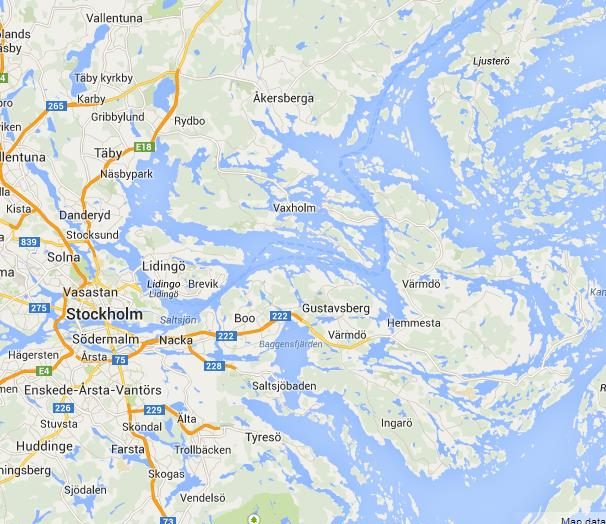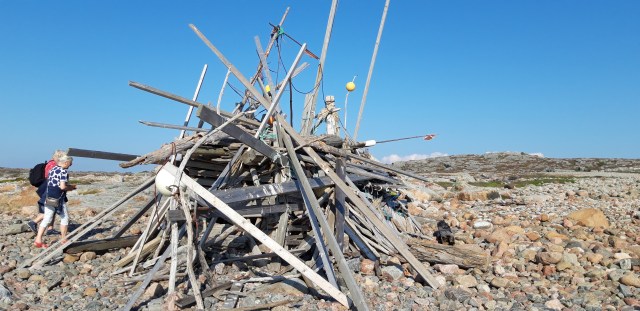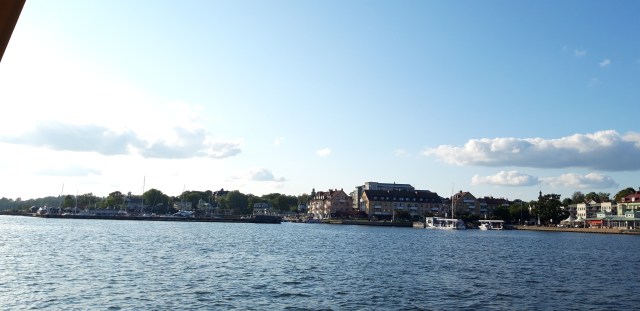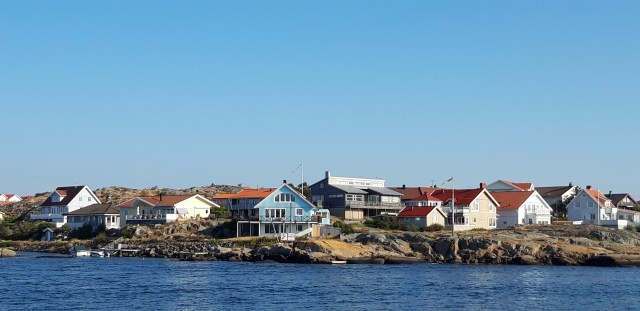
My wife is Swedish and for almost 40 years I have been travelling to and from Sweden. Sometimes several times a year and occasionally a year or two with no visits. Short period stays for a few weeks up to one period where we lived and worked in the country for 2 years. It has been a privilege to get snapshots of the changes and trends in a country and culture over a generation. All aided by in-laws and Swedish friends as expert guides. Despite seeing a lot of the country I really have still only seen a small part. Much of the time the places visited have been in the main populated areas in the south of the country. Between the 2 biggest cities and south of that to the coast. Sweden is a big country with relatively few people. As an example the UK has 11 times more people per sq km. than Sweden. It is all relative and the north of the country is far more sparsely populated than the south where most live.
Gothenburg on the west coast and the capital Stockholm on the east. In many ways different but with some geographical similarities. One such is that each city has an archipelago. A string of islands off their respective coasts. Gothenburg’s look like they have exploded out along the coast whereas Stockholm’s seem more swirling in and attached to the city itself. Quite a few who live on these islands work in the cities and commute into their respective metropoli by ferry. A refreshing way to start and finish the work day. The lifestyle reminds me of when I lived in Sydney. There I stayed in the northern suburbs of Manly but went to work in the city by ferry. Salt spray and fresh winds do wonders for the frazzled office worker.
To me one remarkable thing about Sweden is the eye watering taxes people are prepared to pay. That might sound like a negative but there are advantages to living in what is a very egalitarian society. One of them is that many of these islands have free car and passenger ferries for both locals and visitors. Ran by the state you can enjoy free island hopping by bike, car or on foot. No skimping on the service from early morning to late at night. Some services run every 10 mins during the day.
This generous government policy also keeps the islands populated and accessible. If you have a second home on an island you can regularly visit. Also many go for day trips or weekends so local tourism and businesses thrive. In addition a number of close knit islands have bridges joining them. Further enhancing the convenience of moving around the islands. The islands of Gothenburg’s southern archipelago are car free and there are some passenger only ferries where you do pay. Not sure what the rules are for paying and non-paying ferries.

I have only visited Gothenburg’s northern archipelago and most seem to be mainly rocky with not a lot of trees. Not unlike Scotland’s west coast in parts. The few of Stockholm’s inner islands I have seen have more abundant tree life. Although ferry travel is made easy, living on these islands is not cheap. Houses are expensive. Sweden manages to combine a benevolent and generous form of socialism with competitive markets and a very entrepreneurial society.
Stockholm, sometimes called the Venice of the north, is itself a collection of islands. It has more of everything compared to it’s smaller sibling Göteborg in the west. Thousands of islands in its archipelago (though not all populated), more wealth and more people.
The islands on both coasts often have picturesque harbours and an abundance of pleasure craft. All giving an air of relaxed and lazy living. As a mere observer with no real insider knowledge Stockholm’s islands seem to have more of a cosmopolitan air, perhaps inevitable given it is the capital. Gothenburg’s seem to have more of a local feel and its houses (I imagine) having more vibrant colours.
The islands, whether on east or west, have a rich and interesting history. One example is Rörö, the northernmost island of Göteborg’s archipelago. Now it is a beautiful nature reserve with lovely walks. In days gone by locals got an income from luring ships with bonfires onto it’s rocks. They would then kill any surviving crew and plunder the cargo. The graves of an English crew are said to be buried along the island’s rocky western shore. In Rörö’s harbour today a lifeboat station has pride of place. Saving lives instead of plundering and killing. Times have changed.
The islands on both east and west coasts have been strategic to the defence of Sweden through the centuries. Vaxholm is an island cluster on the way in from the Baltic Sea to Stockholm. It has been strategic to the defense of Stockholm from enemies to the east for centuries. A lot of the substantial buildings are of a defensive nature, such as military barracks or castles. The defence of the capital is still a concern today as every so often a foreign submarine appears in its waters. Vaxholm castle even has a mines museum in its courtyard. The Oxdjupet strait was a strategic waterway on the main passage into Stockholm. Guarded on the west side of the strait by Oskar-Fredriksborg castle and Fredriksborg fortress to the east. For 300 years locals worked on filling in this strait (yes 300 years!) as a means of preventing ships entering Stockholm. Times have also changed here and now this waterway accommodates large liners and ferries on their way into and out of Stockholm.
During the Cold War many underground bunkers were installed on both east and west coast as well as on the mainland. Their locations were hard to detect buried under rock and designed to survive nuclear attack. Some years ago I visited one of these in Gothenburg’s archipelago. Located on an uninhabited rocky outcrop it was well hidden from the pleasure boats that passed by. Along with hundreds of others it was destined to be demolished.
I will not be drawn on whether east is better than west. Suffice to say I come from the port city of Glasgow in the west of Scotland. To the east we also have a capital city, Edinburgh.
One thing I can say is that on a summer’s day seaside ice cream tastes just as good whether looking over the Baltic or the Kattegat. In fact good ice cream tastes the same wherever you are.









Very interesting insight into the East and West of Sweden Allan. I would love to visit as you have whetted my appetite to go.
LikeLiked by 1 person
This article was very revealing. Have you considered a post with the Swedish tourist Board. Lovely photographs
LikeLike
Excellent review about beautiful Sweden, Allan. Looking forward to reading your future posts!
LikeLiked by 1 person
A really interesting description, Allan. Like Jim, I now want to go!
LikeLiked by 1 person
Enjoyed
LikeLike